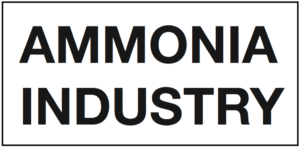

I recently wrote about a vast future market for merchant ammonia: transporting carbon-free energy from Australia's deserts to Japan's electricity grid. Now, however, it is clear that Japan could face international competition for Australia's solar-ammonia resources. Jeff Connolly, CEO of Siemens Pacific, wrote last month about his ambitions for ammonia as an energy export commodity.
Last week, ARPA-E announced funding for eight technologies that aim to make ammonia from renewable electricity, air, and water. The technological pathways being developed include adaptations of the Haber-Bosch process - seeking improvements in catalysts and absorbents - as well as novel electrochemical processes.
A multi-billion dollar clean energy innovation fund was launched last year, at the Paris climate conference. Led by Bill Gates, the private funding enterprise aimed to develop "groundbreaking new carbon-neutral technologies," without specifying details. Now, the Breakthrough Energy Coalition is starting work, and one of its initial Technical Quests is to make "Zero-GHG Ammonia Production" a reality.
Earlier this year, the US Department of Energy (DOE) hosted a day-long meeting "to explore the scientific challenges associated with discovering alternative, sustainable processes for ammonia production." The report that came out of this roundtable discussion presents the participants' views on "the current state-of-the-art and the potential challenges and research opportunities ... for heterogeneous catalysis and homogeneous and enzyme catalysis."
In 2018, a pilot plant in Japan will demonstrate a new way to produce ammonia at industrial-scale, with a low carbon footprint. This is part of Japan's 'Energy Carriers' R&D initiative, which aims to develop technologies to enable the nation's transition to a carbon-free hydrogen economy. The scope of the program covers ten subjects that encompass the full "CO2-free hydrogen value chain." Three of these ten programs describe a technology pathway for making low-carbon ammonia.
I wrote last week about ARPA-E's "transformative" ammonia synthesis technologies, describing three technology pathways under development: low pressure Haber-Bosch, electrochemical processes, and advanced electrolysis. ARPA-E's ambitious R&D program might imply that a meaningful, commercial market for sustainable ammonia is still decades away. It represents, however, only the slow American tip of a fast-moving global iceberg. In Japan, where there's no debate about climate science, the national effort is already well underway, with three programs to develop low-carbon ammonia synthesis under the Cross-ministerial Strategic Innovation Promotion Program (SIP), 'Energy Carriers.'
The US Department of Energy's Advanced Research Project Agency (ARPA-E) is funding projects with a view to commercializing low- and zero-carbon ammonia synthesis technologies. Grigorii Soloveichik, ARPA-E Program Director, described the aims and challenges of his agency's initiative and introduced the technologies currently in development in his keynote presentation at the recent NH3 Fuel Conference, in September 2016.